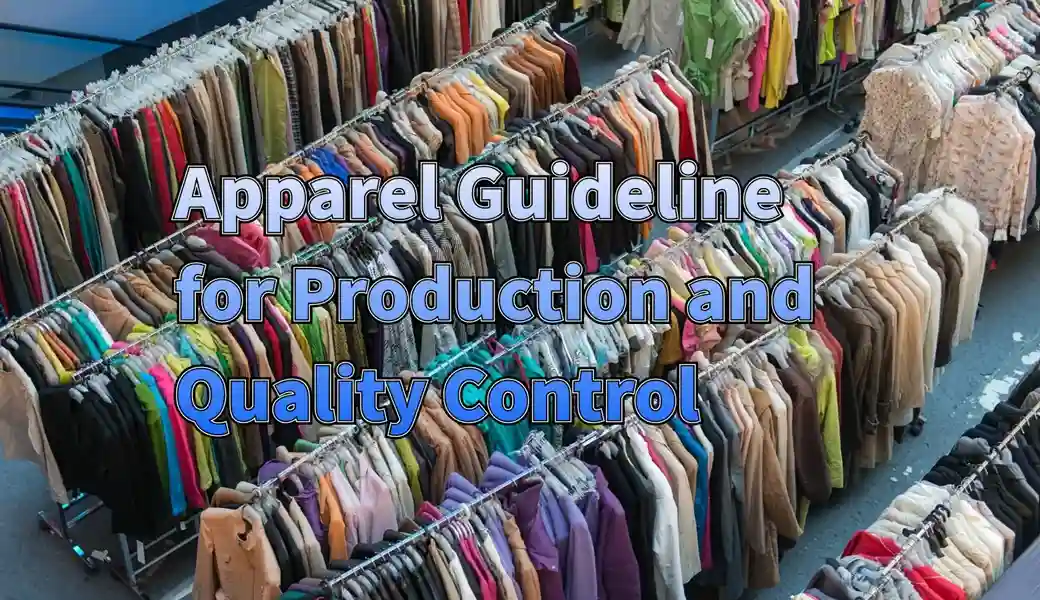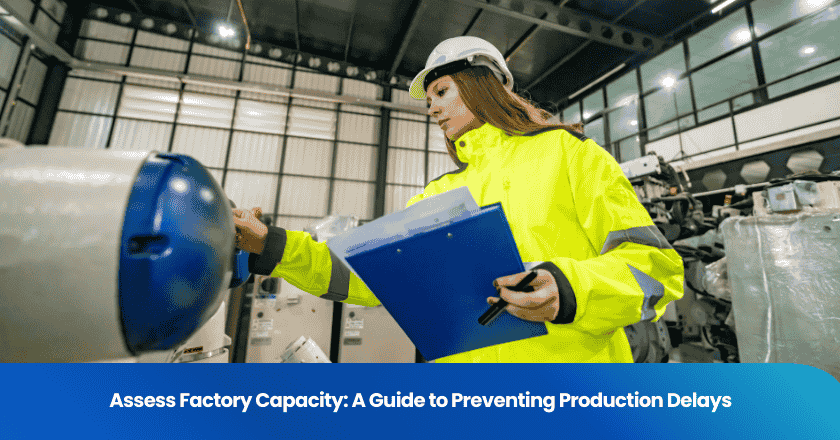
The garment industry is fiercely competitive, and quality and efficiency directly affect brand reputation and customer satisfaction. Through proper production and quality control, it is possible to ensure that garments meet standards in terms of safety, durability, and aesthetics, while reducing waste and defects.
This guide aims to assist garment manufacturers in understanding the comprehensive framework of garment quality control, in order to achieve consistent production quality, optimize processes, and meet international and regional standards.
1. Pre-production guidelines
Fabric and material selection criteria
• Ensure that raw materials meet the specified quality and durability requirements.
• Conduct tests on fabric shrinkage, color fastness, and tensile strength.
• Purchase materials from reliable and certified suppliers.
Best practices in design and pattern development
• Utilize CAD systems for precise pattern design.
• Integrate feedback from the previous production cycle to optimize design.
• Optimize material usage efficiency and minimize waste.
Proofing and sample production process
• Develop samples to verify the feasibility and functionality of the design.
• Conduct a wearing test to evaluate comfort and performance.
• Obtain customer approval through samples before mass production.
Supplier compliance requirements
• Conduct due diligence on suppliers to ensure they comply with ethical and quality standards.
• Require suppliers to provide certifications such as ISO 9001.
• Regularly audit suppliers to ensure their compliance with the agreement.
2. Production guidelines
Establish production workflow
To ensure efficient production operations, we actively implement lean production principles, continuously optimize production processes, eliminate waste, and enhance production efficiency. We clearly define the roles and responsibilities of all production employees, ensuring that everyone is aware of their work tasks and expected outcomes. Additionally, we have carefully sequenced the production steps to ensure that each step is closely interconnected and logically clear, minimizing errors and delays in the production process to the greatest extent possible.
Quality assurance in the production process
Quality is the lifeblood of production. During the production process, real-time monitoring of the production line is conducted through advanced monitoring technology and equipment to promptly identify and address potential issues. At the same time, professional quality inspectors are assigned to supervise at key stages of production to ensure that product quality meets established standards. To further standardize the quality inspection process, detailed inspection checklists are used to ensure that every inspection is based on evidence and follows established procedures.
Manage production schedules and deadlines
We prioritize the management of production schedules and deadlines. We utilize advanced project management tools to track and monitor production progress in real time, ensuring that every task is completed on time. When setting deadlines, we fully consider the actual production situation and potential challenges, setting goals that are both challenging and feasible. Additionally, we allocate buffer time for unforeseen delays, ensuring timely product delivery even in the event of unexpected circumstances. We maintain clear communication channels with all relevant parties to ensure timely information transfer and sharing.
Employee quality control training
Employees are a crucial link in quality control. Regular training on quality standards and inspection processes is provided to ensure that they are familiar with and have mastered relevant knowledge and skills. At the same time, employees are encouraged to actively provide feedback on problems encountered in the production process and suggestions for improvement. Through collective wisdom, we continuously optimize production processes and quality control measures. The importance of quality control in overall production is emphasized, so that employees deeply understand the direct impact of their work quality on product quality and company reputation, stimulating their sense of responsibility and mission.
3. Quality control standards
Define quality indicators and tolerance ranges
To ensure the excellent quality of the product, various quality indicators and tolerance ranges are defined. For the sewing process, specific parameters are established, including stitch density, stitch uniformity, etc., to ensure the sewing effect is firm and beautiful. In terms of dimensions, precise size specifications for each part are clarified, as well as the allowable range of minor deviations, to ensure the product fits comfortably. For the finishing process, detailed standards are set, such as thread trimming and ironing flatness, to enhance the overall appearance of the product.
At the same time, determine the acceptable levels for fabric defects and color deviations. For fabric defects, such as holes and color discrepancies, establish strict judgment criteria and handling methods. For color deviations, ensure product color consistency with samples by comparing with color cards and measuring with a colorimeter, meeting customer expectations.
To facilitate management and execution, all these quality indicators and tolerance ranges are detailedly recorded in the quality manual, serving as the basis for employee training and production operations.
Online inspection program
During the production process, we implement strict online inspection procedures to ensure that issues can be detected as early as possible and resolved in a timely manner. At key production stages, such as cutting, sewing, and ironing, we inspect the products through visual inspection, measurement tool testing, and other methods to promptly identify potential quality issues.
To evaluate batch quality, it is recommended to adopt a scientific sampling method, randomly selecting a certain number of samples from each batch of products for inspection. Through sampling inspection, a comprehensive understanding of the quality status of the entire batch of products can be obtained, and any existing issues can be promptly identified.
Once defects are identified, corrective measures can be implemented immediately, such as adjusting process parameters or replacing non-conforming materials, to ensure that product quality meets established standards.
Final product inspection and testing
After the product is produced, a comprehensive and rigorous inspection and testing process is conducted to evaluate its strength, fit, and functionality. Mechanical performance tests such as tensile testing and tear testing are conducted to ensure the durability of the product. Fitting is assessed through trial wear and size measurements. Functionality is verified through performance tests such as waterproofing and breathability.
To ensure the consistency of product quality across different batches, a random sampling method is employed to select samples from each batch for inspection and testing. By comparing the quality status of samples from different batches, potential quality issues can be promptly identified and resolved.
In addition, we verify whether the product meets the requirements of customers and regulations, such as safety standards and environmental protection requirements, to ensure that the product can smoothly enter the market and meet the expectations of customers.
Packaging and labeling compliance
In terms of product packaging and labeling, we strictly adhere to relevant standards and regulatory requirements. We ensure that packaging materials comply with environmental and safety standards, such as using recyclable materials and avoiding excessive packaging, in order to minimize the impact on the environment.
At the same time, verify the accuracy of label content, including dimensions, materials, care instructions, and other information. Through careful verification and review, ensure that the label content is consistent with the actual product, providing customers with accurate product information and usage guidelines.
Before shipping, a final inspection is conducted to reconfirm the packaging, labeling, and overall quality of the products, ensuring that they are delivered to customers in perfect condition.
END
By adhering to these guidelines, clothing manufacturers can achieve high-quality production standards, reduce defects, and enhance operational efficiency. Consistent quality control can build customer trust, strengthen brand reputation, and ensure long-term success in the highly competitive clothing market.
Grow your business with TradeAider Service
Click the button below to directly enter the TradeAider Service System. The simple steps from booking and payment to receiving reports are easy to operate.



